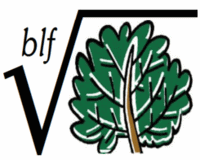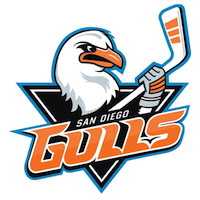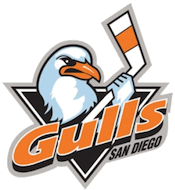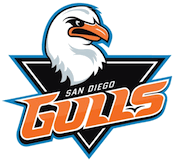

HOME
BASEBALL
OTHER
FEEDBACK
RULES
RANKINGS
HISTORY
TEAMS
Teams with asterisks are not yet posted
Abbotsford Canucks
Adirondack Thunder
Allen Americans
Atlanta Gladiators
Bakersfield Condors
Belleville Senators
Birmingham Bulls
Bloomington Bison
Bridgeport Islanders
Calgary Wranglers
Charlotte Checkers
Chicago Wolves
Cincinnati Cyclones
Cleveland Monsters
Coachella Valley Firebirds
Colorado Eagles
Evansville Thunderbolts
Fayetteville Marksmen
Florida Everblades
Fort Wayne Komets
Grand Rapids Griffins
Greensboro Gargoyles
Greenville Swamp Rabbits
Hartford Wolf Pack
Henderson Silver Knights
Hershey Bears
Huntsville Havoc
Idaho Steelheads
Indy Fuel
Iowa Heartlanders
Iowa Wild
Jacksonville Icemen
Kalamazoo Wings
Kansas City Mavericks
Knoxville Ice Bears
Lehigh Valley Phantoms
Lions de Trois-Rivières
Macon Mayhem
Maine Mariners
Manitoba Moose
Milwaukee Admirals
Newfoundland Growlers
Norfolk Admirals
Ontario Reign
Orlando Solar Bears
Pensacola Ice Flyers
Peoria Rivermen
Providence Bruins
Quad City Storm
Rapid City Rush
Reading Royals
Roanoke Rail Yard Dawgs
Rochester Americans
Rocket de Laval
Rockford IceHogs
San Diego Gulls
San Jose Barracuda
Savannah Ghost Pirates
South Carolina Stingrays
Springfield Thunderbirds
Syracuse Crunch
Tahoe Knight Monsters
Texas Stars
Toledo Walleye
Toronto Marlies
Tucson Roadrunners
Tulsa Oilers
Utah Grizzlies
Utica Comets
Wheeling Nailers
Wichita Thunder
Wilkes-Barre/Scranton Penguins
Worcester Railers

| San Diego Gulls | 37 |
Notice: All logos on this page are included within the parameters of 17 U.S.C. § 107, which states that the reproduction of a copyrighted work for purposes of criticism and/or comment is not an infringement of copyright. No challenge to the copyrights of these logos is intended by their inclusion here.
Posted 2016 Feb 11
NOTE: I wrote a review for another team called the San Diego Gulls about eleven years ago. And truth be told, I could simply put that old review up and call it a day. After all, my comments about the team name still apply, and the logo this incarnation of the Gulls is using is so similar to the one the last Gulls used that the comments about the logo still apply as well.
But perhaps out of boredom and perhaps out of a desire to provide you with something new to read, I'm going to basically write a whole new article covering the exact same topics.
When I wrote the previous review for the San Diego Gulls, I wondered by
there were so many teams in baseball and hockey named after birds of the
non-predatory variety, and so few teams in football or basketball with
such names. Now, after having actually gone so far as to do research
into the matter, I think I have a theory.
To begin, it's necessary to understand how professional sports came into being. In the early days, sports leagues were purely local affairs, with people forming clubs to play on an informal basis against other clubs. In short, they were all beer leagues, except that even a typical beer league today is better organized because the beer league will make certain all teams play all other teams a set number of times. And in much the same way as no team in your local beer league is going to put the name of the city in its team name, most teams of the time didn't.
Then, as happens with anything that's supposed to be fun in this world, people started taking it way the hell too seriously. As a result, teams started paying players under the table so they could have the best players, and pretty soon teams didn't even bother with the "under the table" part. The National Association of Base Ball Players, an amateur organization founded in 1857, responded by creating a professional division in 1869, and in 1871 nine of these clubs — Athletic Base Ball Club (located in Philadelphia), Boston Base Ball Club, Chicago Base Ball Club, Forest City Base Ball Club (located in Cleveland, which at the time was nicknamed "The Forest City"), Forest City Base-Ball Club (located in Rockford, Illinois, which is also nicknamed "The Forest City"), Haymaker Base Ball Club (located in Troy, NY), Kekionga Base-Ball Club (located in Fort Wayne), Mutual Base Ball Club (located in Brooklyn), and Olympic Base Ball Club (located in Washington, DC) — broke away from the NABBP to form the National Association of Professional Base Ball Players. The names of these teams reflected earlier naming conventions: five of them didn't include the city name, and two of those that did (by now playing teams in other cities was becoming common enough that using the city as the team's name only seemed mildly ridiculous) used the city's nickname instead of its actual name. None of them actually had both a geographic name and a nickname.
Of course, once teams started playing games against teams in other cities, newspapers started being interested in covering games. And because sports writers have always written in a more colorful style than the reporters of "straight" news, they started assigning nicknames to the teams. Very early on these nicknames were almost entirely colors. For example, let's look at the first season of the National League of Professional Baseball Clubs, more commonly known to baseball fans as simply the National League. It's 1876. The Athletic, Boston, and Mutual Base Ball Clubs are still around, and although the Chicago Base Ball Club disbanded in 1871 after the Chicago Fire, a new CBBC was founded in 1872. These teams were joined by the Hartford Base-Ball Club, Louisville Base Ball Club, and the (I promise I am not making this one up) St. Louis Club of St. Louis. (Aside: Note how every one of the new teams uses the actual city name in its team name.) But if you look at the standings for the 1876 NL season, you'll see that all of these teams are listed as having nicknames, and aside from the "New York Mutuals" and "Philadelphia Athletics", these names are also based on colors: Boston Red Stockings, Chicago White Stockings, Cincinnati Red Stockings, Hartford Dark Blues, Louisville Grays, and St. Louis Brown Stockings.*
Of course, just using colors gets boring pretty quickly, so the sports writers had to liven things up again. Since the bold colors seen on sports uniforms are also seen on birds, sports writers started referring to the teams as birds whose colors matched the team colors. I don't know this to be the first example, but the earliest I could find is the Lord Baltimore Base-Ball Club which played in the NAPBBP from 1872 to 1874; thanks to their yellow jerseys, they were dubbed either the "Canary Birds" or "Canaries".
The point to all this is that if you're wondering (as I was) why a baseball team would name itself after a songbird (as recently as 2013, a team in Sioux Falls resurrected the "Canaries" name), it's because these songbird names are older than either raptor-based names such as Hawks or Eagles or mammalian names such as Tigers. And you can see the effects of this tradition even today: in Major League Baseball, there more teams named after songbirds (Baltimore, St. Louis, Toronto) than after non-human mammals (Chicago, Detroit), and of the two mammalian names, one carries no more intimidation factor than the songbird names.
The story is similar in hockey. Professional hockey grew out of amateur club hockey, meaning that a lot of early teams had the same sort of descriptive names. Looking at the teams who won the Stanley Cup in the Nineteenth Century demonstrates this nicely: Montreal Hockey Club, Shamrock Amateur Athletic Association (located in Montreal), and two separate clubs (one in Montreal, one in Winnipeg) both called the Victoria Hockey Club. Teams in the early days of hockey often picked up unofficial nicknames, and while these names weren't color-based as often as in baseball (an early example would be the Ottawa Hockey Club, informally known at different times as the Generals, Silver Seven, and Senators), there were some color-based named, as well as some names that came from various birds and which presumably came from the colors of the jerseys. In short, hockey developed a naming tradition very similar (though not identical) to baseball. In the early years of professional hockey, you find names such as the Atlantic City Seagulls, Baltimore Orioles, Chatham Maroons, Chicago Cardinals, Hibbing Maroons, Montreal Maroons, Muskegon Reds, Providence Reds, Rochester Cardinals, Spokane Canaries, Toronto Blueshirts, Vancouver Maroons, Wichita Blue Jays, Wichita Skyhawks, and Winnipeg Maroons. From this list two things are clear: One, as I said a minute ago, is that the naming conventions in hockey were similar to those in baseball. Two, maroon was a really popular color in the early days of hockey.
Football and basketball come from different traditions. Whereas baseball and hockey started as pastimes for adults and the professional versions grew out of the habit of paying players on "amateur" teams, football and basketball first gained popularity as collegiate sports, and the professional leagues started essentially as a way for college players to continue playing. As a result, their naming conventions started off less descriptive and more deliberate. If you look at the 1921 season of the American Professonal Football Association (which would rename itself the National Football League a couple of years later), you already see teams using totemic (by which I mean the teams were choosing to associate themselves with a creature whose traits were to be admired) names such as the Canton Bulldogs, Cincinnati Celts, and Detroit Tigers. There were, of course, non-totemic names (Columbus Panhandles, Green Bay Packers, Hammond Pros), but those totemic names were there from the beginning. More importantly, the only color-based team names were the Racine Cardinals (whose name originally came from the color, although years later as the Chicago Cardinals they would incorporate the bird into their logo) and the Evansville Crimson Giants, who combined a color reference with a totemic reference. While there have been a handful of teams named after predatory birds (Falcons, Eagles, Seahawks) and more teams named after predatory mammals than I care to count, the only non-predatory birds that have ever been used as team names in the entire history of the league have been the Cardinals and the Ravens. And of course, thanks to Edgar Allan Poe, the Ravens name is arguably totemic even if we're talking about a non-predatory bird (predatory birds, I think we can all agree, count as properly totemic names).
Similarly, professional basketball teams were using totemic names from the beginning. In the inaugural season of the Basketball Association of America (which would become the National Basketball Association a few years later), there were the Chicago Stags, Detroit Falcons, Philadelphia Warriors, Pittsburgh Ironmen, St. Louis Bombers, and Toronto Huskies. Oh, and the Providence Steamrollers; I can't decide if that should count as totemic or not. The only team named after a bird in 1946 was the Detroit Falcons (a predatory bird). In fact, it wasn't until 2013 that the NBA finally got a team named after a non-predatory bird, when the New Orleans Hornets changed their name to the New Orleans Pelicans.
These traditions can be seen in the minor leagues as well. In football and basketball you won't find any minor league teams named after non-predatory birds (unless you consider the Canadian Football League to be a minor league, in which case there are the Montreal Alouettes). In baseball, even if you exclude all the teams using their parent team's name, you still have eight: the Delmarva Shorebirds of the South Atlantic League, the Great Lakes Loons of the Midwest League, the Idaho Falls Chukars of the Pioneer League, the Long Island Ducks of the Atlantic League, the Myrtle Beach Pelicans of the Carolina League, los Pericos [Parakeets] de Puebla of the Mexican League, the Sioux Falls Canaries of the American Association, and the Toledo Mud Hens of the International League. Meanwhile, hockey has the Quad City Mallards in the ECHL, and in the AHL there's the Wilkes-Barre/Scranton Penguins (named after their parent team) and the San Diego Gulls.
 As you can see, the logo the AHL
Gulls are using is extremely similar to the logo which was used by the
West Coast Hockey League Gulls (and later the ECHL Gulls) from 1995 to
2006, which is shown to the left. In my review of the WCHL Gulls eleven
years ago, I commented that the logo would be much improved by getting
rid of the hockey stick and the hand that was holding it. The stick was
clumsily drawn, the hand was clumsily drawn, and the hand and stick
accounted for every BLF point the team had aside from the two-point
penalty for including the name in the logo (which almost every team
gets). All of this holds true for the new logo as well. In fact, if
you'll look to the right and down a bit, you'll see the new logo with
these elements removed. Compare that to the actual logo; don't you
think it looks a lot better without them?
As you can see, the logo the AHL
Gulls are using is extremely similar to the logo which was used by the
West Coast Hockey League Gulls (and later the ECHL Gulls) from 1995 to
2006, which is shown to the left. In my review of the WCHL Gulls eleven
years ago, I commented that the logo would be much improved by getting
rid of the hockey stick and the hand that was holding it. The stick was
clumsily drawn, the hand was clumsily drawn, and the hand and stick
accounted for every BLF point the team had aside from the two-point
penalty for including the name in the logo (which almost every team
gets). All of this holds true for the new logo as well. In fact, if
you'll look to the right and down a bit, you'll see the new logo with
these elements removed. Compare that to the actual logo; don't you
think it looks a lot better without them?
 That said, they've added one thing to
the new logo which I really like. Look at the negative space between
the second L and the S in "Gulls". Notice the outline of
a flying gull? That's a nice touch.
That said, they've added one thing to
the new logo which I really like. Look at the negative space between
the second L and the S in "Gulls". Notice the outline of
a flying gull? That's a nice touch.
The gull's head is drawn better as well. For that matter, the hand and stick are drawn better, but the logo is still better off without them.
| * | Many readers are probably assuming that the Boston Red Stockings are today's Boston Red Sox, the Chicago White Stockings are today's Chicago White Sox, the Cincinnati Red Stockings are today's Cincinnati Reds, the Philadelphia Athletics are today's Oakland Athletics, and perhaps the St. Louis Brown Stockings are the "St. Louis Browns" who moved to Baltimore to become the Orioles in 1954. Five understandable assumptions, but they're all wrong. The Red Stockings are today's Atlanta Braves, the 1876 Chicago White Stockings are today's Cubs, the 1876 Cincinnati Red Stockings folded at the end of the 1880 season (although today's Reds, who were founded in 1882 in the American Association, claim to be a continuation of these Red Stockings), the 1876 Philadelphia Athletics disbanded at the end of the 1876 season, and the 1876 St. Louis Brown Stockings folded in 1877. That being said, all five of the later teams did pick their nicknames with the older club in mind; in the case of Boston and Chicago, the 1876 teams had quit using their 1876 nicknames at least a decade before the latter team started using it. |
Final Score: 37 points.
Penalties: Anthropomorphization, 10 pts; Name-logo, 2 pts; Equip-logo (quadruply-egregious, 25 pts.
Bonuses: None.